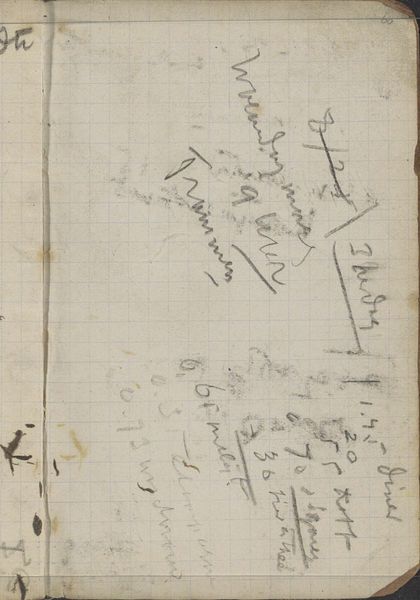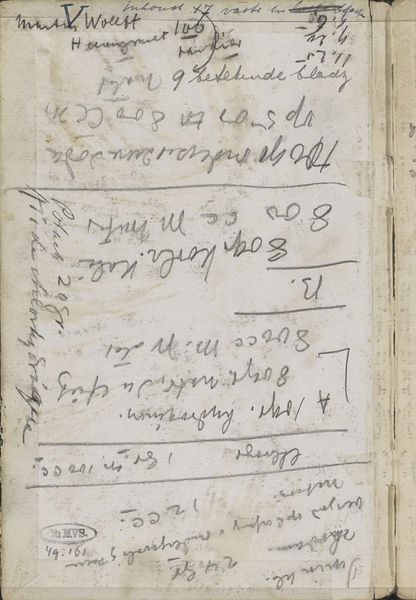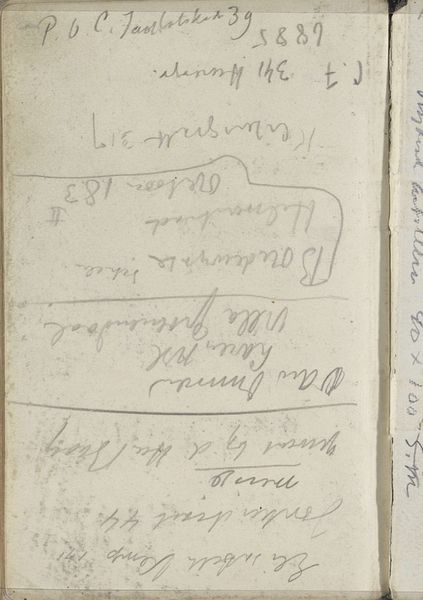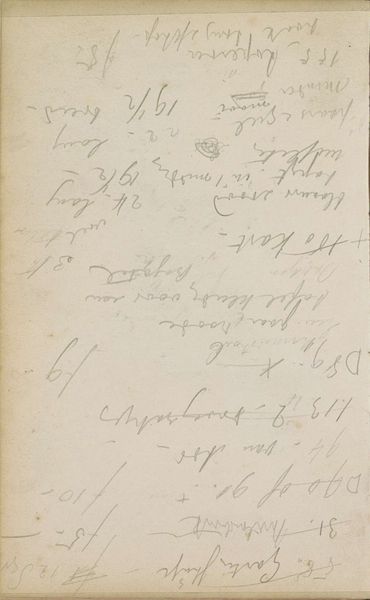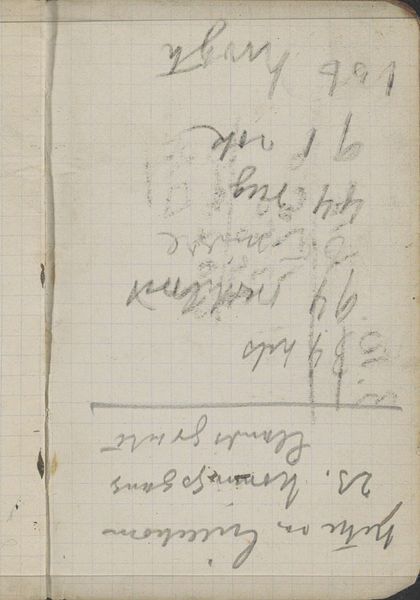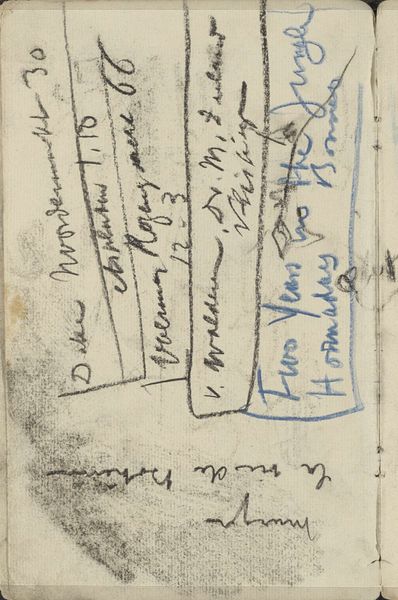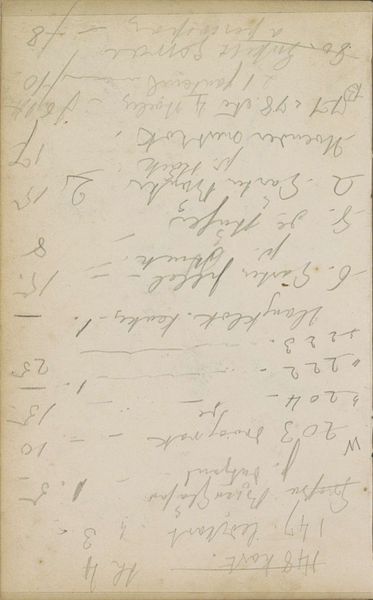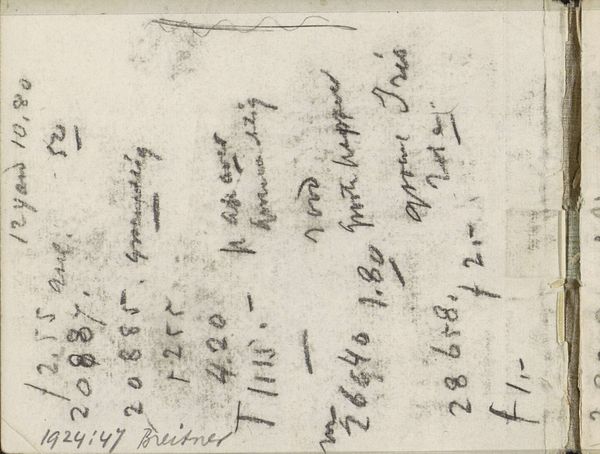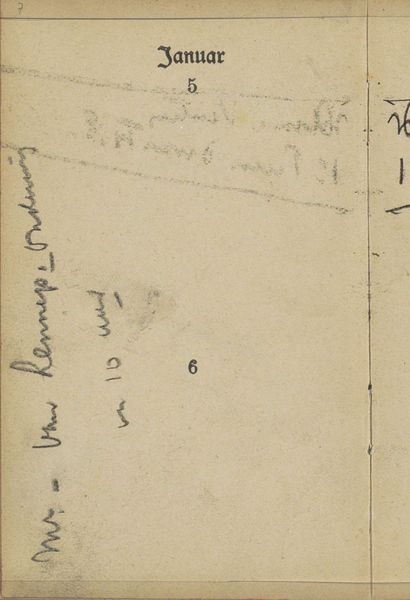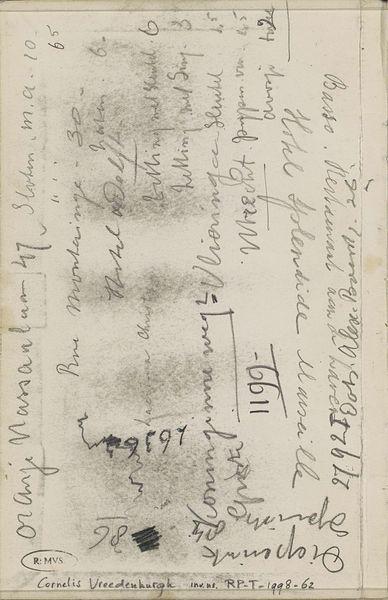
drawing, mixed-media, paper, ink
#
drawing
#
mixed-media
#
paper
#
ink
#
modernism
Copyright: Rijks Museum: Open Domain
Curator: Cornelis Vreedenburgh’s “Notities,” made between 1890 and 1946, strikes me as a compelling insight into an artist's process. How does this piece speak to you? Editor: Well, it’s definitely a peek behind the curtain! The mixed media drawing on paper, the scribbled notes and seemingly random calculations... it feels so intimate and unfiltered. Almost like accidentally stumbling upon someone’s private thoughts. I am curious about your interpretation of this drawing, particularly within the historical context. Curator: The nature of notebooks and "notities" during this period occupies an interesting place in history and serves several potential purposes. Firstly, as aides-mémoire: records of color mixtures or material calculations remind us that artists were grappling with a rapidly changing landscape of industrially produced art materials, a context which surely influences any modernist. Secondly, it also seems to gesture towards financial accountability - which becomes more relevant as artists' roles shift from court employee to participant within emerging market economies. So, how do you think Vreedenburgh’s notes position him within that shift? Editor: That’s fascinating, I hadn’t considered the economic implications of those calculations! Perhaps the mix of artistic notes and calculations reflects a tension between creative freedom and financial pragmatism. Curator: Precisely! Now, looking at the notations themselves - words like “Imperial”, Sorrento,” “Tramontane”. How might travel factor into your assessment of the work, and does it speak to any established socio-political structures? Editor: Given the reference to Sorrento, possibly Italy, a common destination for artists at that time, combined with the calculations, the work reveals that artistic production may well need patronage or independent wealth, particularly if the artist travels internationally! Thank you so much, this was really enlightening. I didn’t think about that before. Curator: Indeed. Examining the intersection of an artist’s notes with their historical context adds an amazing perspective, revealing a deeper appreciation for their work, and social class!
Comments
No comments
Be the first to comment and join the conversation on the ultimate creative platform.


